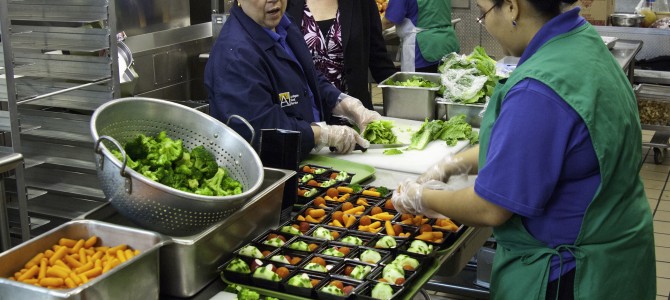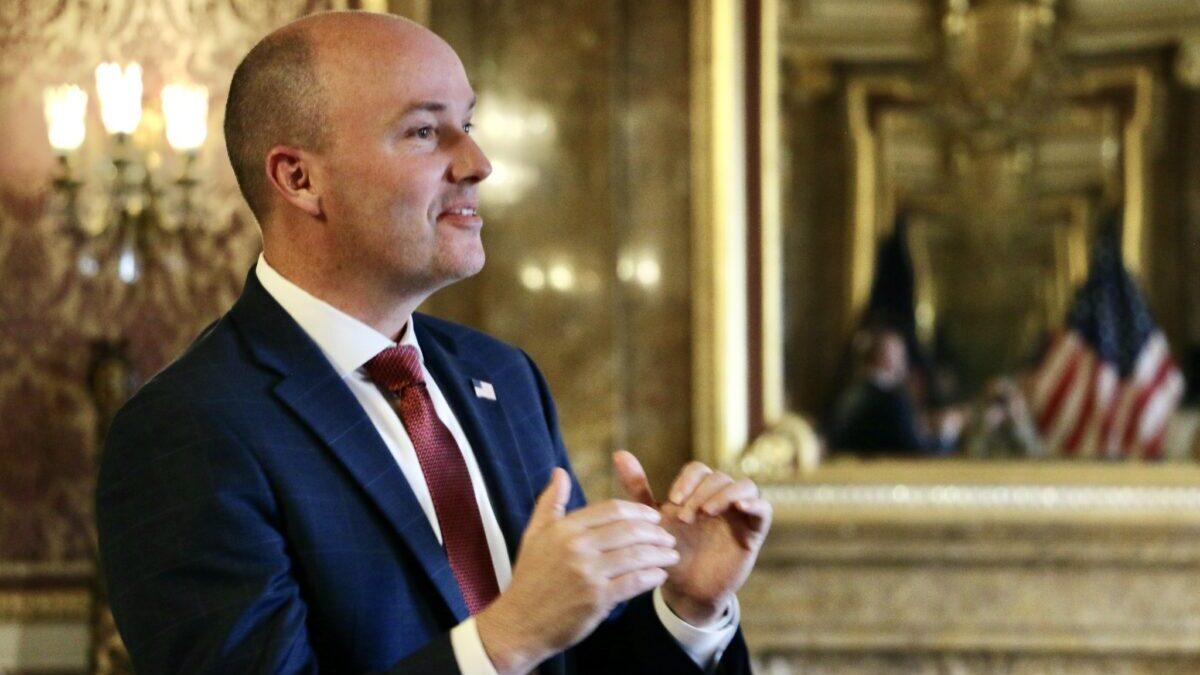
At CPAC yesterday, Paul Ryan delivered a speech where he used an anecdote about a child who was on the school lunch program. Referring to a story told to him from Eloise Anderson, a leading voice on welfare reform who testified recently before the House Budget committee, Ryan said:
But I don’t think the problem is too many people are working — I think the problem is not enough people can find work. And if people leave the workforce, our economy will shrink—there will be less opportunity, not more. So the Left is making a big mistake here. What they’re offering people is a full stomach—and an empty soul. The American people want more than that.
This reminds me of a story I heard from Eloise Anderson. She serves in the cabinet of my friend Governor Scott Walker. She once met a young boy from a poor family. And every day at school, he would get a free lunch from a government program. But he told Eloise he didn’t want a free lunch. He wanted his own lunch—one in a brown-paper bag just like the other kids’. He wanted one, he said, because he knew a kid with a brown-paper bag had someone who cared for him.
That’s what the Left just doesn’t understand. We don’t want people to leave the workforce; we want them to share their skills and talents with the rest of us. And people don’t just want a life of comfort; they want a life of dignity—of self-determination. A life of equal outcomes is not nearly as enriching as a life of equal opportunity. The party that speaks to that desire—that tries to make it concrete and real—that’s the party that will win in November.
Cue the left-wing social media explosion. What was surprising to me wasn’t the questions about the veracity of the story, but the outrage over what Ryan was trying to say with it. Despite it being pretty reasonable that a kid would notice that other kids have lunches made by their parents and possibly feel different about that, this was immediately interpreted as “Free School Lunches Means Parents Don’t Care about Kids” and “Republicans Want To Rip Food Away From Starving Children” moment. (I’d surmise this coordinated panic was likely due to the folks featured in this ABC piece, “Meet the Democrats Who are Watching Every Move the GOP Makes”.)
Yes, I understand this is politics – and both parties use kids as rhetorical devices and play gotcha games – but it’s frustrating on the heels of what will be an important debate on the success of the War on Poverty to see the left ignore the one thing Ryan’s story highlights: what is best for that child and his family. As Ryan commented in a recent interview about his report on the nation’s welfare programs:
“There are nearly 100 programs at the federal level that are meant to help, but they have actually created a poverty trap,” Ryan said in an interview. “There is no coordination with these programs, and new ones are frequently being added without much consideration to how they affect other programs. We’ve got to fix the situation, and this report is a first step toward significant reform.”
The left often fails to understand that government programs create incentives and disincentives. The current patchwork of programs to help the poor create incentives for poor mothers to not make a lunch for their kid even if they are inclined to. Instead of having one cohesive approach to aid the poor, there are food stamps, WIC, school lunch programs and more. If you are poor, using your food stamp money to buy food to make a lunch means you wouldn’t be utilizing your free lunch dollars.
This creates a tough decision for moms with kids like the one in the anecdote, who’d presumably like to make her kid a lunch… but thanks to government policy, it makes little economic sense for her to do so. That’s the precise point Ryan has been making regarding the multitude of conflicting means-tested programs and how they hurt the poor. The poor are rational economic actors and will work to maximize their resources including government assistance. The problem is when there are so many programs, it forces people to make choices they may not normally make. The left cannot claim that there isn’t enough money being thrown at the problem – Food Stamp spending is more than double what it as in 2007 and is projected to stay at those levels.

But that’s not the point. The point is that no one really wants to be on government assistance. Does it help that kid to be reminded daily he’s different from other kids? From my recollection of school, I’d say no. Would his mother prefer to make him a lunch if that matters to him – and wouldn’t she like to have some say in the foods he’s eating? I’d like to think so.
No one on the left side of the aisle seems concerned that they are distorting choices for people. It’s telling that one liberal’s solution for the problem Ryan identified is essentially a mandate that everyone must eat a government school lunch so no one feels left out. School lunches should be a universal right – the brown bags must go!
Never mind that the government’s school lunches haven’t exactly been performing well of late:
More than one million U.S. schoolchildren stopped buying school lunches during the 2012-2013 academic year, after new nutrition standards championed by first lady Michelle Obama took effect.
The Government Accountability Office, a watchdog agency inside the federal government, told members of Congress in a little-noticed January 28 report that participation in the school lunch program declined by 1,086,000 in that one year, the biggest drop on record GAO report concluded.
The stunning drop in cafeteria meals came despite annual increases in the number of children who receive free, taxpayer-subsidized lunches every weekday, the GAO report concluded.
One change in the nutrition standards, a reduction in the maximum calorie-count of each meal, came under fire from student-athletes at the high school level who complained that their bodies needed more food in order to sustain long workouts and build muscle mass. At the same time, increases in fuel prices and varying weather patterns increased the wholesale cost of many of the fruits and vegetables that student found in larger quantities on their plates. As a result, the new meals were also more expensive.
A universal right to an undernourishing lunch of government gruel, made more expensive thanks to labor costs? (Should anyone be surprised this effort to expand free school lunches is really a handout to unionized cafeteria workers?) That sounds like a great idea:
In North Syracuse, Ms. D’Angelo said the entire pricing structure was out of balance. After labor costs, she said, she is left with 15 cents per lunch to buy ingredients, repair equipment and equip cafeterias. The federal government, under the National School Lunch Program, reimburses more than 100,000 schools nationwide up to $2.77 for the cost of each school lunch. But that money is also used to cover the salaries of lunchroom staff, electricity costs, kitchen equipment and more. Ultimately, some schools spend as little as 90 cents on the food itself.
No one wants children or poor families to starve. But it makes more sense for parents to use food stamps to purchase food directly and take the few minutes it takes to make their children lunch. This is an opportunity to encourage personal responsibility, empowering them to make their child’s own lunch and not just rely on the government to raise them. Paul Ryan wasn’t saying we should rip food away from hungry kids. He was saying that a safety net can only do so much to help a child live.
But it was International School Lunch Day – so how dare you, Paul Ryan.
Conservatives celebrate International School Meals Day by praising Paul Ryan for shaming kids on free lunch programs http://t.co/5jzZBfdAKL
— Media Matters (@mmfa) March 6, 2014









